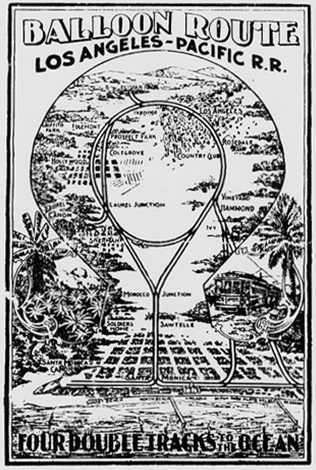Specific Item Information: Fantasy paint scheme, as the company disappeared largely before these cars were even built.
Model Information: Originally, these models were produced in Japan by Kato for Con-Cor. However, since Con-Cor owned the tooling, they later decided to move the molds to their Chicago factory and later releases of the car were produced in the United States. This tooling may have been eventually moved to China when Con-Cor moved their production to China in the 1990s. ESM has produced this model in assorted paint schemes.
Prototype History: The Association of American Railroads had been establishing design standards for freight cars since the early part of the century. Each new design standard meant higher capacity, lighter, more durable cars. The 1937 standard 40' box car featured an interior height of 10'. Just prior to America's entry into the war, there was a push for an even larger interior height for the AAR standard. The first cars that would eventually be termed 1944 AAR, were actually built in 1941 but the war delayed its declaration as the standard. The new taller cars required a new design of end. Corrugated metal ends had been used since the days when wood side cars dominated for a very good reason, shifting loads would burst through wooden ends during sudden starts and stops! These corrugated panels were stamped in two sections, split horizontally down the middle. The 1937 standard had 5 ribs on one half and 4 ribs on the other -- creating what is called a 5-4 Dreadnaught end. The slightly taller 1944 model required something a little different. The lower panel has 4 ribs while the upper panel has 3 then a space and a final rectangular rib at the top. Called a 4-3-1 (or R-3-4) Improved Dreadnaught end, this design would dominate new box car construction for years.
Road Name History:  The Los Angeles Pacific Railroad (1896−1911) (LAP) was an electric public transit and freight railway system in Los Angeles County, California. At its peak it had 230 miles (370 km) of track extending from Downtown Los Angeles to the Westside, Santa Monica, and the South Bay towns along Santa Monica Bay.
The Los Angeles Pacific Railroad (1896−1911) (LAP) was an electric public transit and freight railway system in Los Angeles County, California. At its peak it had 230 miles (370 km) of track extending from Downtown Los Angeles to the Westside, Santa Monica, and the South Bay towns along Santa Monica Bay.
On September 1, 1911, in what is called “The Great Merger”, the Southern Pacific consolidated seven electric railways into the new “Pacific Electric Railway Company”. The Los Angeles Pacific lines, along with the Glendale–Burbank Line and the soon-to-be-completed San Fernando Valley Line, would become the Pacific Electric’s Western Division.
The Balloon Route Trolley trip was a featured excursion of the Los Angeles Pacific, and opened in 1901.Initially, the line ran from the Hill Street station in downtown Los Angeles, via the Santa Monica Short Line through Hollywood to Santa Monica and Ocean Park, and then back to Los Angeles via Palms and the Venice Short Line. When the LAP was consolidated into the new Pacific Electric Railway Company (PE) in 1911, PE took over the operations and continued the excursion until 1923.

On September 1, 1911, in what is called “The Great Merger”, the Southern Pacific consolidated seven electric railways into the new “Pacific Electric Railway Company”. The Los Angeles Pacific lines, along with the Glendale–Burbank Line and the soon-to-be-completed San Fernando Valley Line, would become the Pacific Electric’s Western Division.
The Balloon Route Trolley trip was a featured excursion of the Los Angeles Pacific, and opened in 1901.Initially, the line ran from the Hill Street station in downtown Los Angeles, via the Santa Monica Short Line through Hollywood to Santa Monica and Ocean Park, and then back to Los Angeles via Palms and the Venice Short Line. When the LAP was consolidated into the new Pacific Electric Railway Company (PE) in 1911, PE took over the operations and continued the excursion until 1923.
Brand/Importer Information: The Freight Yard was a hobby shop that did custom decoration and special runs of other manufacturers' N Scale products. It sold its custom products under several brands or collections: Premiere Editions, by The Freight Yard and Dreams Design.
It was located in Anaheim, California and then moved to 2006 in Phoenix, Arizona.
Established in the late 1980s, it stopped business under this name by the end of the 2000s.
The Freight Yard was owned and operated by Darren J. Cohen. Darren is now operating North Valley Trains.
The Freight Yard / Premiere Editions runs are usually available in series of two to twelve different numbers (suffixed A to M, with I not used).
The first two digits of the stock number correspond to the release year (9x being 199x, and 2x being 200x).
It was located in Anaheim, California and then moved to 2006 in Phoenix, Arizona.
Established in the late 1980s, it stopped business under this name by the end of the 2000s.
The Freight Yard was owned and operated by Darren J. Cohen. Darren is now operating North Valley Trains.
The Freight Yard / Premiere Editions runs are usually available in series of two to twelve different numbers (suffixed A to M, with I not used).
The first two digits of the stock number correspond to the release year (9x being 199x, and 2x being 200x).
Item created by: Alain LM on 2022-04-15 01:42:39. Last edited by Alain LM on 2022-04-17 02:53:44
If you see errors or missing data in this entry, please feel free to log in and edit it. Anyone with a Gmail account can log in instantly.
If you see errors or missing data in this entry, please feel free to log in and edit it. Anyone with a Gmail account can log in instantly.










